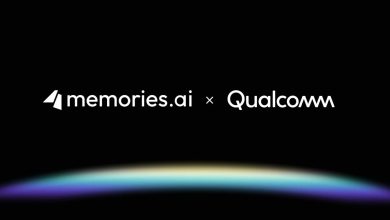The Internet of Things (IoT) is a strange name that refers to a network of physical devices or ‘things’ all over the world which connect and share data using the internet. It describes our modern reality which is full of devices that connect to each other and to the digital world. By 2022, roughly 29 billion devices worldwide is predicted to be connected to the internet. Edge computing, on the other hand, can be defined as processing on local servers such as a personal device or data center in an attempt to speed up data.
As a result, edge computing technology allows users to experience IoT technology to its fullest potential. Both of these technologies are growing rapidly, but here are a few IoT edge computing trends to expect in the upcoming year.
IoT And Industry 4.0: The Fourth Industrial Revolution
Industry 4.0 alludes to a new phase in the Industrial Revolution that merges the physical aspects of manufacturing with recent innovations in digital technology. It combines the interconnectivity of IoT with advancements in smart manufacturing. Industry 4.0 takes advantage of technologies such as machine learning, automation, and real-time data processing.
This cyber-physical model of manufacturing offers businesses a myriad of benefits including:
· An increase in competitiveness by optimizing operations and providing crucial insights.
· The ability to attract new workers.
· A reduction in manufacturing costs while increasing profitability.
In the upcoming year, advancements in IoT and edge computing will likely offer more benefits to the manufacturing industry and businesses who have adapted Industry 4.0. Here are a few possible applications of IoT and edge computing in the manufacturing industry to expect more of in the new year:
· Predictive maintenance of equipment which allows companies to get more use out of expensive equipment.
· Interconnected vehicles.
· More dynamic and efficient configurations in production.
IoT In Smart Agriculture
As the global population continues to increase exponentially, a smarter way to optimize food production is crucial to human surivival. When applied to smart farming, IoT technology could have a significant impact in efficiency and productivity.
In addition to providing farmers with real-time data on crucial factors such as soil quality and climate conditions, it could also help them track the health of their equipment. This ability to monitor several important processes results in lower costs and higher crop yields.
“The use of interconnected smart devices using IoT boosts efficiency by automating several processes,” explains Robert Pressley, a business blogger at Writinity and Draftbeyond. “Not only does this network of equipment reduces labor costs, but the real-time data gathered from these devices allows farmers to detect possible crop diseases early.” This minimizes the amount of crops lost every season and saves farmers from costly infestations.
Wearable IoT
Wearable versions of IoT are nothing new. Devices such as fitness watches designed to track exercise and monitor health have been around for years. However, these watches will likely continue to advance in features and performance in 2022.
For example, the most recent Apple Watch models now have an ECG app in addition to a ‘tap to pay’ technology. This means these watches are now able to connect and exchange data with devices other than your smartphone. They can even connect to cellular networks, place calls, and receive messages without the user’s phone nearby. IoT and edge computing technologies could enhance connectivity functions further in the upcoming year.
Similar to innovations in smart watches, IoT and edge computing could improve processing speeds for wearable cameras, smart shoes, heart rate monitors, and other wearable tech.
IoT And 5G
As 5G assumes its role as the new standard for mobile networks, innovations in IoT could mean faster and more reliable connectivity. If 5G is enhanced by edge computing technology, it would be able to process data instantaneously in real-time. This quick response time between devices on the network offers numerous benefits for settings such as healthcare where fractions of a second matter.
“Not only is it convenient, but edge computing technology’s ability to boost processing speeds on your mobile device could be beneficial for anyone who relies on real-time data to make informed decisions,” according to Stella McCall, a technical writer at Researchpapersuk.
IoT And The Pandemic
Due to its ability to track in real-time, some companies are turning to IoT technology in order to ensure workers maintain their physical distance from each other during the pandemic. If COVID-19 continues to devastate people and businesses in the new year, more companies might turn to IoT to uphold social distancing measures.
Conclusion
Although there are many potential applications of IoT and edge computing technologies across various industries, the ones above will likely drive growth in the new year. In a world where connectivity and time are more valuable than ever, innovations in IoT and edge computing technologies are essential.



